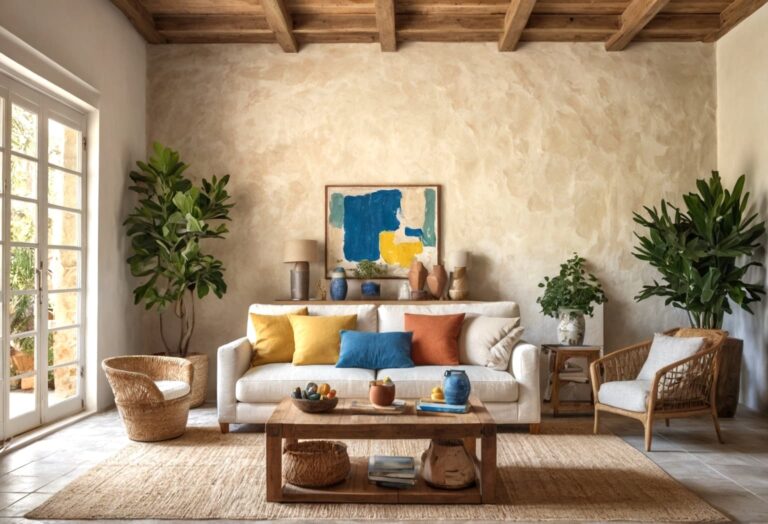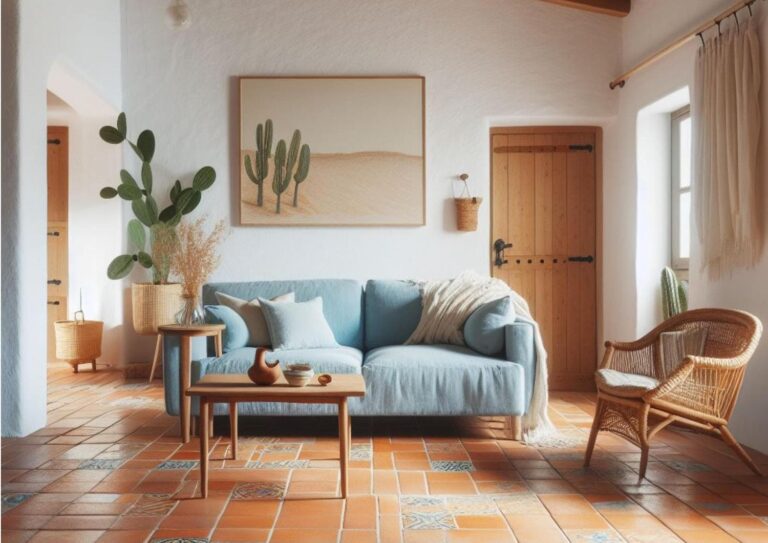
“mediterranean colors are the poetry of the natural world”
The Mediterranean decor aesthetic is all about its vibrant, earthy, and sun-soaked hues, inspired by the stunning landscapes and cultures surrounding the Mediterranean Sea.
This interior design style is characterized by its warm and inviting atmosphere, often evoking the feeling of a sunlit coastal retreat. To achieve this look, choosing the right colors and color combinations is crucial.
Here’s how you can infuse your own home with the charming and timeless appeal of Mediterranean decor.
Understanding the Mediterranean Color Palette
The Mediterranean palette draws heavily from the natural surroundings of the region. Think of the golden beaches, the deep blue of the sea, the rich terracotta shades of the soil, the lush greens of olive trees and lilac purples of almond blossoms.
These colors not only create a warm and inviting ambiance but also bring a touch of nature indoors, reflecting the outdoor environment indoors.
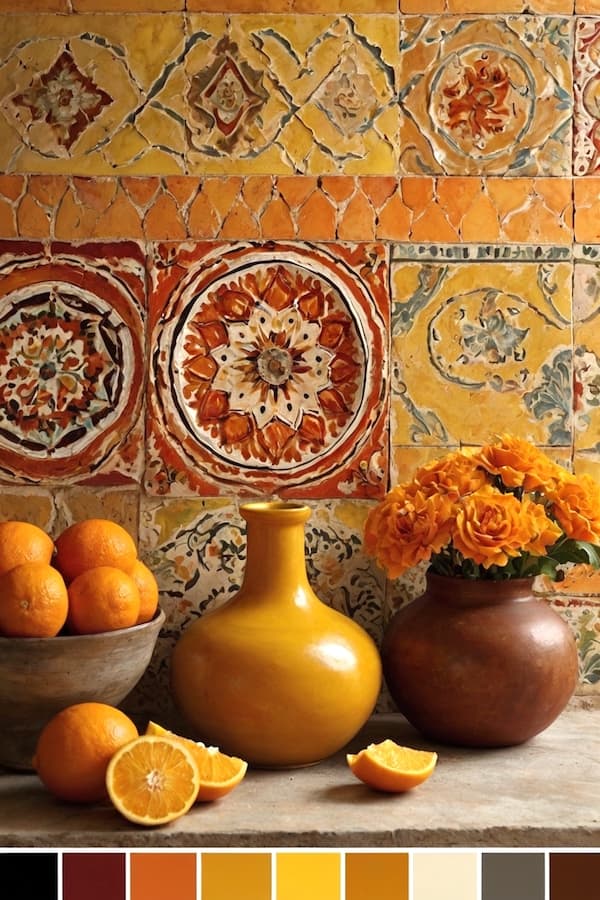
Creating Harmony and Balance
When incorporating these color combinations, it’s essential to maintain a balance to avoid overwhelming the space.
Textures and materials also play a significant role in Mediterranean decor. Consider natural materials like wood, stone, and wrought iron to complement your color choices. Textiles such as linen, cotton, and wool in your chosen palette will add depth and comfort to the space.
Use the 60-30-10 rule as a guideline: 60% of the room should be a dominant color (often a neutral or lighter shade), 30% should be a secondary color (a more vibrant hue), and 10% should be an accent color (a bolder shade or pattern)
Key Mediterranean Colors and Their Combinations
Warm Yellow and Burnt Orange
Inspired by the golden sunlight and vibrant sunsets of the Mediterranean coast, warm yellows and burnt oranges add a cheerful and energetic vibe.
Use these colors in moderation as accent walls, tiles, or in smaller decor items like lampshades, cushions, and artwork. These hues are particularly effective in kitchens and dining areas, where they can create a lively and inviting atmosphere.

PERCENTAGE: 60%
HEX: #FDB813

PERCENTAGE: 30%
HEX: #D2601A

PERCENTAGE: 10%
HEX: #005AA7
Terracotta and Blue
Terracotta is a staple in Mediterranean decor, reminiscent of sunbaked pottery and tiled roofs. Pairing it with various shades of blue, from the deep indigo of the Mediterranean Sea to the softer sky blues, creates a dynamic and balanced look.
For instance, consider terracotta walls or flooring with blue and olive accent pieces like cushions, vases, or even a painted door. This combination evokes the rustic charm of coastal villages.

PERCENTAGE: 60%
HEX: #B5651D

PERCENTAGE: 30%
HEX: #002D72

PERCENTAGE: 10%
HEX: #5B7444
White and Blue
This classic duo mirrors the iconic white-washed buildings and azure skies of the Greek islands. White walls serve as a perfect canvas to highlight blue accents. Think of blue window frames, doors, and furniture against crisp white backgrounds.
Add blue and white patterned textiles and sand colored accents, such as rugs or throw pillows, to enhance the theme. This combination is fresh, clean, and timeless.

PERCENTAGE: 60%
HEX: #FFFFFF

PERCENTAGE: 30%
HEX: #005780

PERCENTAGE: 10%
HEX: #D9B382
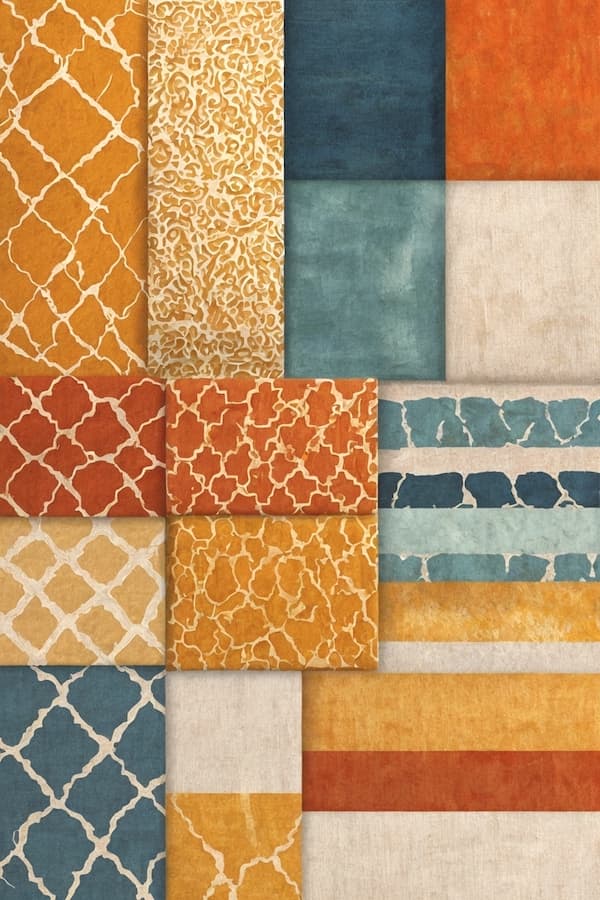
Earthy Neutrals with Olive Green
Earthy neutrals, including shades of earthy beige, olive, and dark terracotta accents, provide a warm and versatile base. These tones are beautifully complemented by olive green, reminiscent of the Mediterranean olive groves.
Use olive green in upholstery, curtains, or as a feature wall to bring a natural, organic feel to your space. This palette is perfect for creating a serene and grounded environment.

PERCENTAGE: 60%
HEX: #BCB8B1

PERCENTAGE: 30%
HEX: #768A2C

PERCENTAGE: 10%
HEX: #A23B22
Lavender and Ochre
Lavender fields and sunlit landscapes are captured in the combination of lavender and ochre. Lavender, with its soothing and calming properties, works beautifully in bedrooms and bathrooms.
Pair it with ochre accents, which add warmth and depth. This duo brings a soft yet vibrant touch to any room, reflecting the diverse flora of the Mediterranean region.

PERCENTAGE: 60%
HEX: #D9B2D3

PERCENTAGE: 30%
HEX: #F2A900

PERCENTAGE: 10%
HEX: #8A9A5B
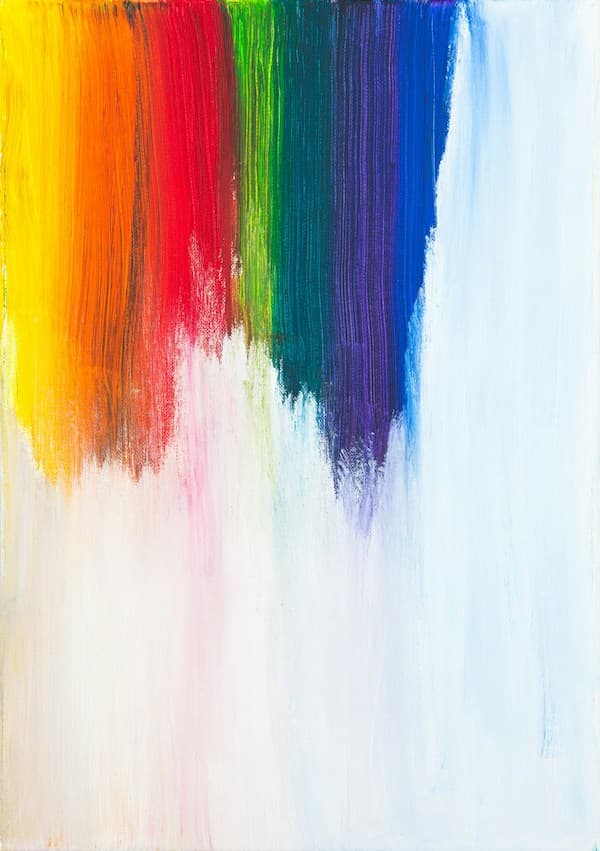
Mediterranean Colors FAQs
Q. Can I incorporate Mediterranean decor in a small apartment?
Absolutely! Use lighter colors like whites and blues to make the space feel larger and more open. Incorporate small accent pieces in terracotta or olive green to add character without overwhelming the room.
Q: How can I add a Mediterranean touch without repainting my walls?
Focus on decor items like cushions, rugs, and curtains in Mediterranean colors. Adding accessories such as vases, picture frames, and artwork can also introduce the desired aesthetic without major changes.
Q: Are there specific patterns associated with Mediterranean decor?
Yes, look for patterns like intricate tile designs, geometric motifs, and floral prints. These can be incorporated through textiles, ceramics, and even wallpaper to enhance the Mediterranean feel.
Q: What type of furniture works best with a Mediterranean color scheme?
Opt for furniture made from natural materials like wood and wrought iron. Pieces with a rustic or vintage feel complement the Mediterranean palette well. Comfortable, overstuffed sofas and chairs in neutral or earthy tones are ideal.
Q. Can I mix different Mediterranean color combinations in one room?
While it’s possible, it’s important to ensure that the colors harmonize well together. Stick to a cohesive theme and use complementary colors to avoid a chaotic look. For example, if you have a blue and white theme, you can add terracotta accents sparingly.
